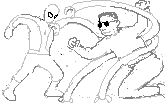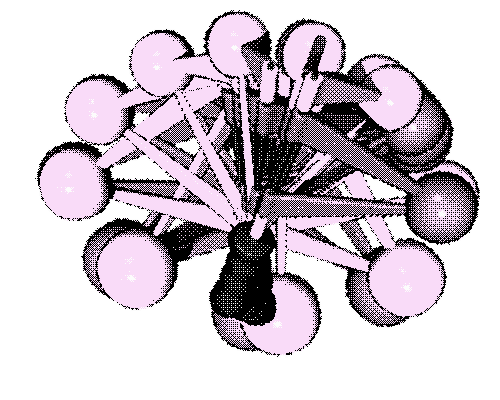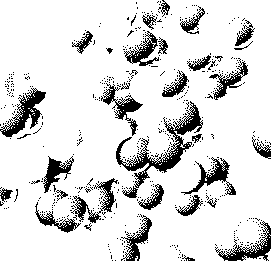
Day: June 29, 2011
The art is worth nothing?
imaginariel goldberger, commenting on a Kyle Chayka post about younger artists' work, says he teaches them in school and believes
This generation is not about being "Blank" [it's] about being "Instant." Most artistic products I see are about ephemerality, about "recycollage/recyclage" (collage made with recycling media) and about creating and re-creating art that references this generation's fascination with social connections in cyber-space. Yes, it looks trite or over intellectualized at a superficial level if I look at it with my generational filter, but if i exercise curiosity, invite the artists in a dialogue with me as equals and ask them what they are doing and why, I find that the art I see is a decoy. It is basically an instantaneous and calculated obsolete contribution to a continuously obsolescing sea of social networking blips. The "art" itself is worth nothing, since it is no longer the medium. The social millieu is now the medium, as performance, presence and discourse. The "art" is but another excuse for creating and re-creating personages, stories, glimmers of presence, and possibilities, meant to last only until the next spark. Galleries and institutions are slowly trying to figure out how to monetize this, until then, critics are not going to get it.
This recalls the recent argument on AFC about whether or not Graphics trump Interchange in a certain much-discussed Format. Goldberger's description inspires but the work we see on the (ageless) internet is too complex, hypnotic, and emotionally charged to be just a decoy. More is happening than the Beuysian social sculpture new media professors were heralding before their students came along and embodied it. This page of Duncan Alexander's, for example, is no decoy, although the simplicity of the abstract forms might be deceptive. These aren't just ovals clinging to a great circle, struggling to align themselves with the common perspective as the (w)hole slowly turns; it's a collective Sisyphean struggle to maintain discipline within the elastic gyres of constantly dating technology, symbolized by the shaky GIF anchoring the illusion. Whether this interpretation is too overbearing, the content is in the piece and my response to it and not somewhere off in the Cloud.
(continuing minor edits)
On the tackiness of GIFs and other earth-bending matters
A few more belated responses to comments that came up in the recent GIF confab in Paddy Johnson's comment threads (some of this has been covered but am still wrestling with implications). Comment two is Paddy's, and she raises a good point, which I'm thinking about out loud here.
Comment one: Facebook, Twitter (& whomever else) block animated GIFs for one reason: they don't want to be Myspace.
Response: The assumptions embedded in this (purely speculative) statement are that MySpace is tacky and therefore GIFs are tacky. But how useful is it to accept or promote an ordinary, cliche idea of GIFs when discussing how artists are using or repurposing them? Moreover, there is actually a history of using MySpace for display of GIFs with an art frame of reference. Several years ago Rhizome.org, the new media website, sponsored an exhibition of GIFs and GIF-related art in a San Francisco gallery. (Full disclosure: I was in it.) A MySpace page was created for the show. At the time MySpace was just the social media vehicle of choice, it hadn't been declared officially tacky yet. But regardless, there was a certain self-awareness and irony of using this crassly commercial vehicle for display of art that had theretofore been considered, by some, crassly bling-y. Using Facebook as the gold standard of tastefulness and applying it to a filetype that artists have used as a critique of taste compounds the enforced mediocrity.
Comment two: What's happening to GIFs seems a little like the Polaroid problem to me. People still make the film, but it's impossible to find. Not being able to shoot Polaroid doesn't mean that artists will stop being creative, but it does mean they may have to switch mediums if it's no longer practical. That will be more painful to some artists than others.
Response: I prefer this formulation from an earlier post: "[GIFs] are becoming like the abandoned playgrounds and swimming pools taken over by skaters in the '70s, or the zone of the 'recently outmoded' that, according to Dan Graham, is a good place for artists to be working." It does seem contradictory to be complaining about the thoughtless phase-out of GIFs by web developers if the whole point of a practice is critical use of the outmoded. Maybe what I object to is the thoughtlessness (see comment one above) more than the actual phase-out. Or the loss of a technology that gives the critique of the technology its meaning. But the latter is a completely untenable position--skaters weren't demanding the construction of completely new graffiti-scrawled backyard pools. How about this? I'd like for GIFs to stick around because they are an exciting laboratory for expression that doesn't automatically adopt the assumptions of progress and versioning promoted by the commercial internet. I like that I can get them in people's faces because browsers still read them. Do I believe web developers should preserve GIFs so I can have my little critique? No. But there are nice things about GIFs that have nothing to do with critique that we have discussed at length. Would like for people to be aware of those before any kneejerk phase-out occurs. Maybe some of these attributes can be rolled into a post-GIF graphics environment. But artists can't be guaranteed to like the result. Some of an artist's response to a medium or vehicle is based on shifting, perverse cycles of acceptance and rejection. Much more nuanced than clinging to an old form, moaning.
Update: Rhetoric toned down slightly.



